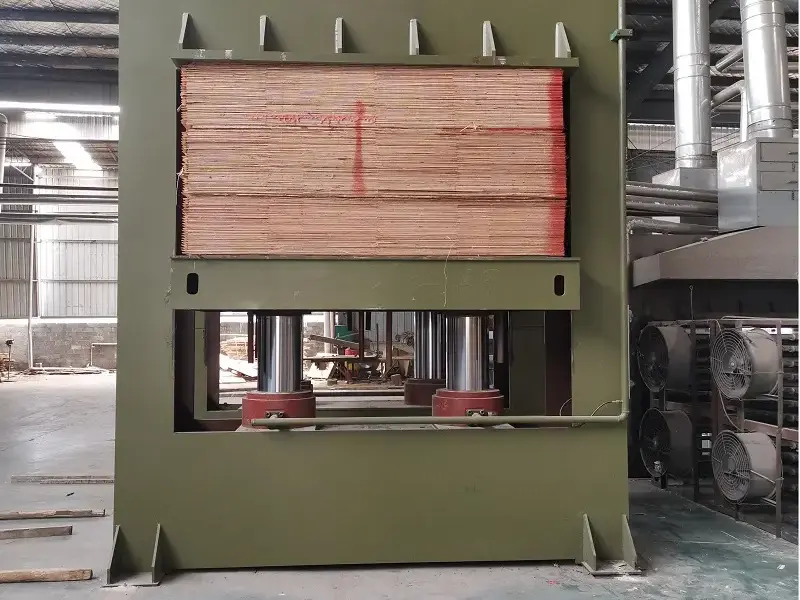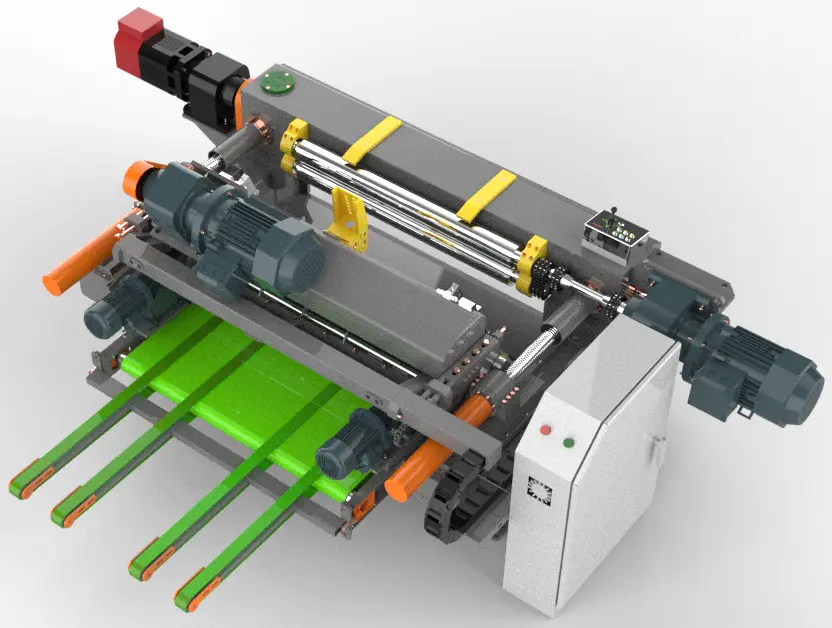In the plywood manufacturing industry, the plywood cold press machine (pre-press machine) is an indispensable and crucial piece of equipment. It not only improves production efficiency but also ensures product quality, meeting the market’s demand for high-quality plywood. This article will provide a detailed introduction to the specific role of the plywood cold press machine, helping you better understand this key equipment.
In plywood production, cold pressing is required before the hot press process. The role of the plywood cold press machine in this process includes the following points:
1.Preliminary Bonding and Shape Fixing
Cold pressing allows the veneers to initially bond at room temperature, preventing misalignment or delamination of the veneer sheets during handling and the hot press process. This helps ensure the overall integrity and stability of the plywood during hot pressing.
2.Optimizing Adhesive Distribution
Cold pressing increases the fluidity of the adhesive, ensuring a good adhesive film forms on the surface of the veneers. This prevents issues like uneven adhesive distribution, lack of adhesive, or dry adhesive spots. As a result, the adhesive cures more evenly during hot pressing, enhancing the bonding strength.
3.Reducing Deformation and Warping
Cold pressing helps to initially fix the shape of the plywood and balances the stress between the veneer layers. This balance further stabilizes the plywood during hot pressing, reducing deformation or warping caused by uneven moisture content or temperature fluctuations.
4.Enhancing Moisture Resistance
The combined effect of both cold and hot pressing helps to seal the internal structure of the plywood, reducing moisture penetration. During the hot press process, the adhesive fully cures under high temperature and pressure, forming a complete waterproof barrier that further improves moisture resistance.
5.Reducing Wear on Hot Press Equipment
Hot press machines operate under high temperature and pressure, resulting in high energy consumption and significant equipment wear. Cold pressing helps reduce heat loss during the hot press, lowering both energy consumption and equipment wear.
6.Expelling Air and Moisture
During the plywood lay-up process, air and moisture are often trapped between the veneers. The pressure from the cold press helps expel the air and some moisture, making the plywood denser. This denser plywood improves heat transfer efficiency during hot pressing, ensuring the adhesive cures evenly, and prevents the formation of steam, which can lead to bubbling, delamination, or other quality defects. This helps maintain the stability of the plywood quality.
7.Reducing Hot Press Energy Consumption
After cold pressing, the adhesive has partially solidified, allowing for a shorter hot pressing time. This not only improves production efficiency but also reduces energy consumption.
Summary
In plywood production, the process of cold pressing followed by hot pressing is a scientifically sound and rational process arrangement. This method significantly improves adhesive quality, reduces deformation and warping, enhances production efficiency, improves product quality, and boosts moisture resistance. By combining cold and hot pressing, plywood manufacturers can better meet the market’s demand for high-quality plywood. TMC Machinery is a manufacturer of high-quality plywood cold press machine. For more information about plywood cold press machines, please visit: Cold Press Machine.



